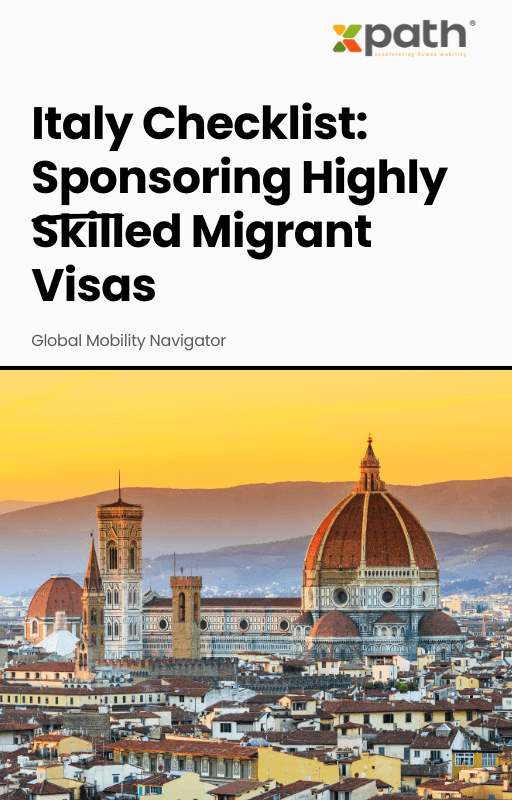Italy Checklist: Sponsoring Highly Skilled Migrant Visas
Grab a copy of a guide to international employee relocation
View E-bookWhen unexpected disruptions make traditional operations impractical, it’s essential to define a new normal and adapt accordingly. Organizations today are reassessing workplace flexibility to respond to evolving workforce expectations, ensure safety, and support collaboration across diverse geographic locations. Adapting to new ways of working often requires developing new strategies, capabilities, behaviors, and mindsets, drawing insights from the coaching industry.
Here are five strategies for fostering a human-centered, virtual workplace flexibility:
Organizations should start by gaining a thorough understanding of the work that needs to be accomplished, the interactions required, and the impact on customers. Mapping out collaboration and access needs will help determine which tasks can be performed remotely and which cannot. Engaging directly with those involved in the work will provide valuable insights into collaboration requirements and accessibility needs. The coaching industry emphasizes the importance of understanding individual and team needs to tailor effective solutions.
A human-centered approach to the workforce experience is crucial for remote work. This approach prioritizes worker wellbeing and is underpinned by inclusivity, trust, and humanity. Organizations should emphasize workforce wellbeing and offer flexible work options that cater to a variety of diverse needs. Insights from the coaching industry can help organizations design flexible work policies that genuinely support employees and enhance their remote work experience.
Leaders are pivotal in driving organizational change. They need resources and technologies to foster strong relationships and facilitate effective collaboration in virtual settings. Creating a remote workplace doesn’t mean eliminating in-person interactions but rather finding new ways to personalize them in a virtual environment. For instance, using video in virtual meetings helps simulate face-to-face interactions. The coaching industry can offer strategies to leaders for enhancing remote leadership skills and maintaining engagement in virtual settings. Refer to the accompanying chart for tips on conducting successful virtual meetings.
High-performing organizations are significantly more likely to use data to guide workplace decisions. This data can come from internal sources (e.g., HR systems, employee surveys, operational systems) and external sources (e.g., customer requirements, talent market trends, remote job potentials). Organizations should leverage various types of data to identify necessary changes, experiment with different workplace models, and gradually scale successful strategies. The coaching industry often highlights the value of data-driven decisions in improving both individual and organizational performance.
As organizations implement these strategies, they should also adopt a holistic view of the workplace. Recognize that the workplace extends beyond the traditional physical office. Embracing empowerment and flexibility within current roles can lead to innovative uses of nontraditional work environments, ultimately delivering greater impact and value. Insights from the coaching industry can help organizations align their big-picture goals with practical, flexible work strategies.
Technology plays a crucial role in enabling effective remote work. Organizations should invest in the latest tools and platforms that enhance virtual collaboration, communication, and productivity. Leveraging advanced technologies can streamline processes and improve the overall remote work experience. The coaching industry often recommends staying updated with technological trends to ensure that remote work strategies remain effective and relevant.
Regular feedback from employees is vital for refining remote work practices. Organizations should establish mechanisms for ongoing feedback to identify challenges and areas for improvement. This continuous dialogue helps ensure that the remote work environment evolves in alignment with employee needs and organizational goals. The coaching industry advocates for continuous feedback loops as a way to foster personal and professional growth, which can be applied to remote work settings.
Maintaining a cohesive organizational culture in a virtual setting requires intentional effort. Organizations should foster a sense of belonging and community through virtual team-building activities, regular check-ins, and clear communication. A strong organizational culture supports employee engagement and productivity, even when working remotely. The coaching industry emphasizes the importance of culture in employee satisfaction and effectiveness, offering valuable insights for building and maintaining a strong virtual culture.
Previous article
Next article

Italy Checklist: Sponsoring Highly Skilled Migrant Visas
Grab a copy of a guide to international employee relocation
View E-book